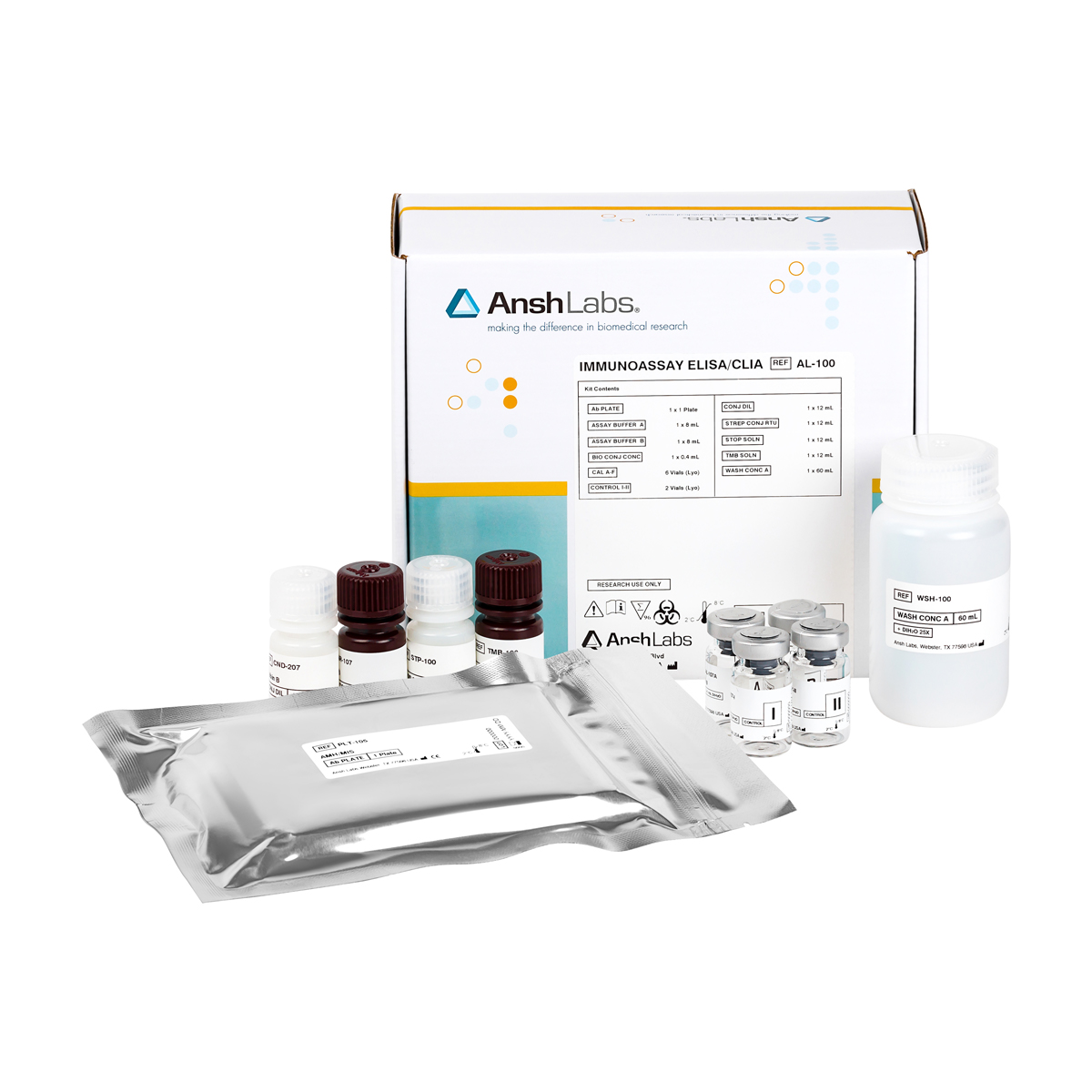The Rat and Mouse Oxyntomodulin (OXM) enzyme linked immunosorbent assay (ELISA) kit provides materials for the quantitative measurement of Oxyntomodulin in K2EDTA and Li-Heparin plasma and other biological fluids.
| Catalog Number | |
|---|---|
| Inventory Status | Made to order. Inquire about leadtime. |
| Packaging | 96 well microtiter |
| Detection | HRP-based ELISA, colorimetric detection by dual wavelength absorbance at 450 nm and 630 nm as reference filter |
| Dynamic Range | 6, 11.4-859 pg/mL |
| Limit of Detection | 2.55 pg/mL |
| Sample Size | 10 µL |
| Sample Type | Plasma |
| Assay Time | 2 hours |
| Shelf Life | 24 months |
| Species Reactivity | Murine Serum, Rattus Serum |
| Availability | Worldwide |
Oxyntomodulin was initially identified as a moiety that exhibited glucagon like immunoreactivity and was appropriately named for its ability to modulate the gastric acid secretion in the gastric oxyntic glands.1,2 Oxyntomodulin is a 37 amino acid peptide hormone secreted by the gut endocrine L-cells post-prandially3. Oxyntomodulin and Glucagon, a peptide hormone secreted by the alpha cells of the pancreas, share the identical amino acid sequence in the N-terminal 29 aa with oxyntomodulin having an additional octapeptide in the C-terminus. Upon nutrient ingestion, prohormone convertase1/3 cleaves proglucagon precursor into Oxyntomodulin, GLP-1/2 and GRPP.3
Oxyntomodulin is known to bind both the GLP-1 receptor (GLP1R) and the glucagon receptor (GCGR), but with lower affinity compared to GLP-1 and glucagon.3
Oxyntomodulin causes weight loss in obese patients via suppression of food intake and increase in energy expenditure.3 It is reported to have varied tissue-specific effects; and stimulates endocrine pancreas to secrete insulin, somatostatin and glucagon. Oxyntomodulin administration was also reported to increase heart-rate in mice.3 Besides regulating glucose homeostasis in monogastric animals, oxyntomodulin also increases the concentration of insulin and glucose in plasma of Holstein cattle under normal physiological conditions.4 Using mass-spectrometry based profiling of human plasma, it was shown that Type 2 diabetes patients have lower levels of Oxyntomodulin and levels increase more than 10-fold after gastric bypass surgery.5 Oxyntomodulin is therapeutically used to lower glucose levels and suppress appetite resulting in weight loss.
References:
- Unger, R.H., Eisentraut,A.M.,McCall,M.S.,Keller,S.,Lanz,H.C.,Madison,L.L., 1959. Glucagon antibodies and their use for immunoassay for glucagon. Proceedings of the Society for Experimental Biology and Medicine 102:621–623.
- Bataille, D., Tatemoto,K.,Coudray,A.M.,Rosselin,G.,Mutt,V.,1981.Bioactive ‘enteroglucagon’ (oxyntomodulin):evidence for a C-terminal extension of the glucagon molecule. Comptes Rendus des Séances de l’Académie des Sciences. Série III 293:323–328.
- Pocai A. 2012. Unraveling oxyntomodulin, GLP1’s enigmatic brother. J Endocrinol. 215(3):335-46
- ThanThan S, Zhao H, Yannaing S, Ishikawa T, Kuwayama H.2010. Oxyntomodulin increases the concentrations of insulin and glucose in plasma but does not affect ghrelin secretion in Holstein cattle under normal physiological conditions. Domest Anim Endocrinol. 39(3):163-70
- Wewer Albrechtsen NJ et al; 2016. Oxyntomodulin Identified as a Marker of Type 2 Diabetes and Gastric Bypass Surgery by Mass-spectrometry Based Profiling of Human Plasma. EBioMedicine.7:112-20.
- HHS Publication, 5th ed., 2007. Biosafety in Microbiological and Biomedical Laboratories. Available http://www.cdc.gov/biosafety/publications/bmbl5/BMBL5
- DHHS (NIOSH) Publication No. 78–127, August 1976. Current Intelligence Bulletin 13 – Explosive Azide Hazard. Available: http:// www.cdc.gov/niosh.
- Kricka L. Interferences in immunoassays – still a threat. Clin Chem 2000; 46: 1037–1038.
